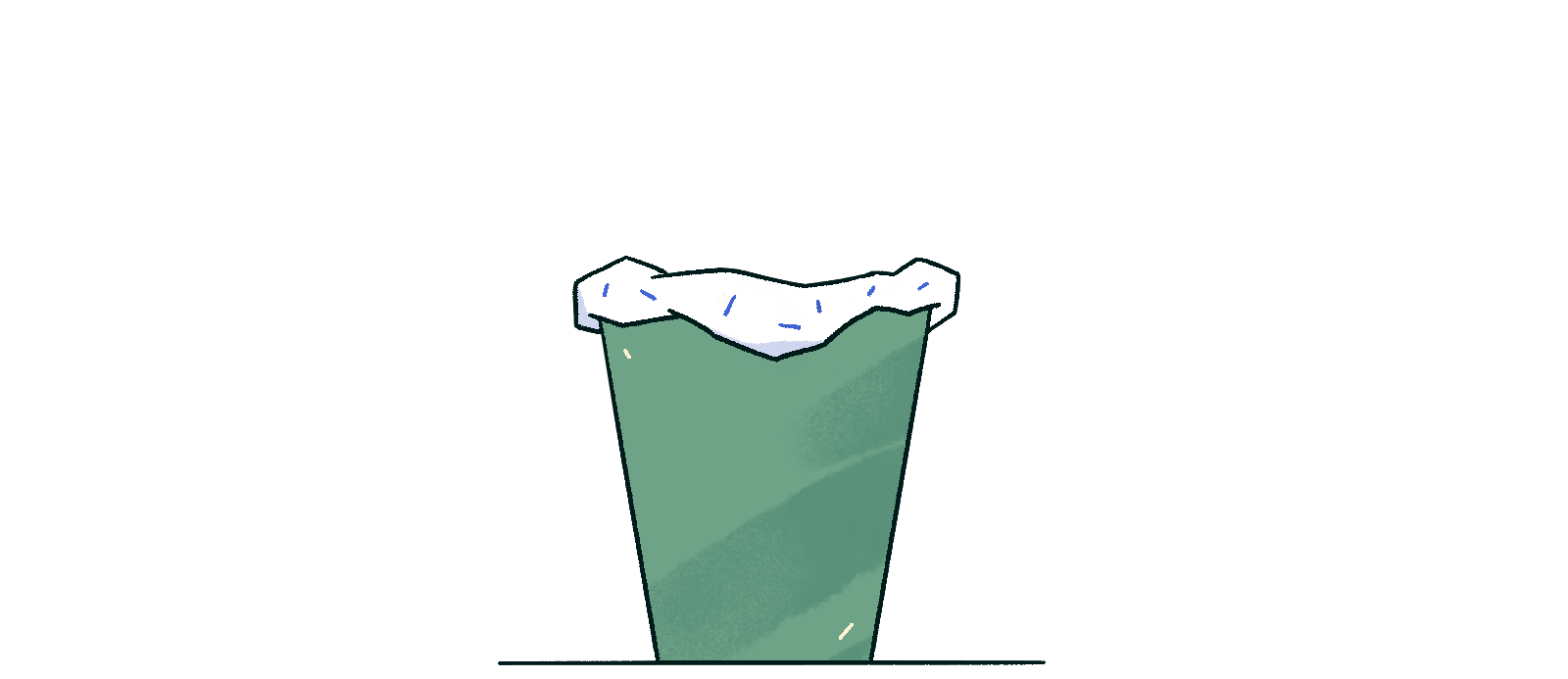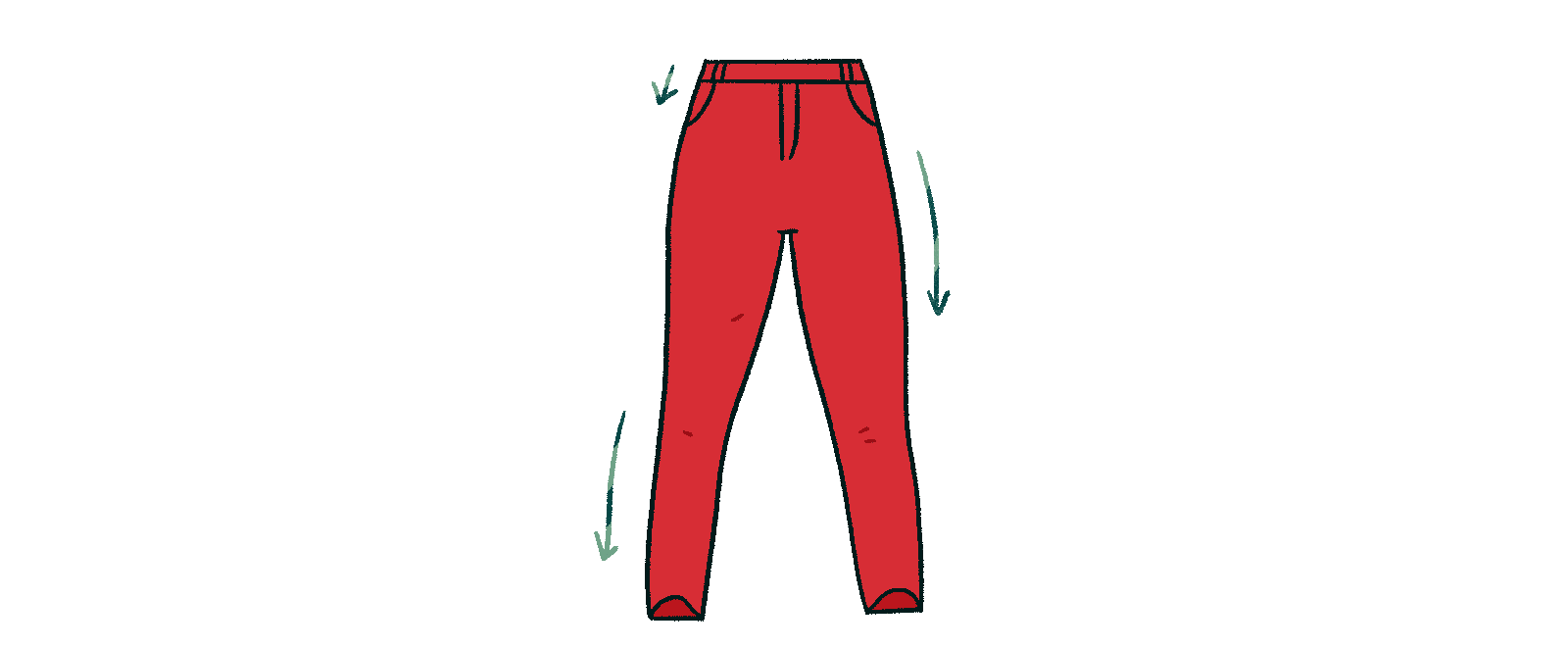This article is part of the Ask Umbra 2021 Holiday Makeover.
The supply chain — the intricate web of international factories, shipping routes, and warehouses that brings us our stuff — is kind of like your appendix: You never think about it until something is wrong with it, and then it’s all you can think about. It doesn’t help that its functioning is as mysterious and opaque to the vast majority of us as that of our innards.
COVID-19, however, has changed all that. Pandemic-driven stressors on this enigmatic organ of the global economy have increasingly brought it to our attention. Will we find store shelves barren? Will we get that package on time? Will Christmas be ruined? Et cetera, et cetera.
Assuming the pandemic eventually ends and the supply chain returns to functioning as normal, we’ll likely go back to never thinking about it again. But while it has our attention, we asked four writers to share their thoughts on what this moment can teach us about how we shop, treat our oh-so-precious devices, dress ourselves, and make stuff going forward — because all of that has big implications for the climate as well.
Let’s talk about how we got into this mess: Scrolling
 When did you first realize that social media was one big shopping app? That its quiet goal — besides to fill every spare minute of your waking life — was to showcase items and brands you never thought you needed, but somehow feel inclined to buy? These apps are designed to ensure that we are perpetually engaged in a state of “ambient shopping.” But confronted by a worsening global supply chain snarl and a looming climate crisis, Americans are forced to reckon with our impulse, as citizen-consumers, to buy, buy, buy.
When did you first realize that social media was one big shopping app? That its quiet goal — besides to fill every spare minute of your waking life — was to showcase items and brands you never thought you needed, but somehow feel inclined to buy? These apps are designed to ensure that we are perpetually engaged in a state of “ambient shopping.” But confronted by a worsening global supply chain snarl and a looming climate crisis, Americans are forced to reckon with our impulse, as citizen-consumers, to buy, buy, buy.
For years, social platforms have tacitly introduced new e-commerce features to familiarize users with the once-radical idea of shopping within the app itself. (Six years ago, Instagram virtually had no ads on its platform.) Users didn’t have a choice in how this social-to-shopping shift played out, But now, in just a few seconds of scrolling, you’re bombarded with not-so-subtle targeted ads. These ads are specific to your personal interests, based on data provided by credit card companies and Google, to present an eerily accurate menu of what you want.
We can’t place the blame for a consumer culture driven by a few half-conscious clicks solely on the social platforms; after all, over 70 million American households have an Amazon Prime shopping subscription. But by deploying algorithms to efficiently introduce users to brands and products they might like, apps like Instagram and TikTok have cultivated — and reinforced — the cultural urge to buy.
Our buying habits are reflecting this slow change, especially among younger people. Consider the “TikTok made me buy it” trend, in which normal users serve as virtual product reviewers, suggesting certain “must-have” gadgets that will supposedly improve the buyer’s life. YouTube, too, wants viewers to start shopping via influencer livestreams. (This type of shopping, called “live stream shopping” is the contemporary analog of QVC or the Home Shopping Network, and has also been adopted by other retailers and platforms). Instagram influencers are financially dependent on posting sponsored content, which means that even innocuous-seeming posts about daily life become advertisements.
Last month, The Atlantic’s Amanda Mull reported that U.S. imports were at an all-time high, in spite of shipping and supply chain delays. This has helped to create a domino effect at understaffed ports, warehouses, and rail yards, where shipping containers have piled up. The holiday shopping surge will only put more strain on that struggling system. I’ve written for Vox about how the supply chain crisis presents us with an opportunity to critically examine our buying behaviors. One way to do that, besides buying less stuff, is to see social media for what it really is: a shopping trap.
— Terry Nguyen, reporter for Vox
It’s time for a reexamination of our high-tech lives …
 As the holiday shopping season ramps up, millions of Americans are no doubt considering purchasing a new phone, computer, or gaming console for themselves or a loved one. But this year, many of those high tech gifts are likely to arrive weeks, perhaps months, late. That’s all due to the chip shortage that has become more or less the poster child for our global supply chain crisis, and it can be explained by many things: pandemic-induced factory slowdowns, an unanticipated spike in demand for new cars, and even bad weather.
As the holiday shopping season ramps up, millions of Americans are no doubt considering purchasing a new phone, computer, or gaming console for themselves or a loved one. But this year, many of those high tech gifts are likely to arrive weeks, perhaps months, late. That’s all due to the chip shortage that has become more or less the poster child for our global supply chain crisis, and it can be explained by many things: pandemic-induced factory slowdowns, an unanticipated spike in demand for new cars, and even bad weather.
But at its root, the crisis reflects the fact that the journey of producing a smartphone, washing machine, or electric car is enormously complex, beginning with the creation of the many tiny computer chips used to store and process information. First, hundreds of materials have to be brought together to make those tiny chips in a process involving hundreds of different steps. Only after those chips are manufactured will they be assembled with myriad other components — each of which has its own labyrinthine origin story — into a finished product that can be shipped across oceans on a fossil-fueled container ship and trucked over land to your home.
Now, consider that every step here requires energy and resources and produces some quantity of pollution or waste. It’s no wonder that the bulk of the environmental impact associated with our devices typically occurs before we buy them. And so much outrage over delays and shortages obscures a much bigger problem: We still treat technology like it’s disposable.
Fortunately, this is a problem we know how to solve. By replacing our throwaway culture with a culture of maintenance, repair and reuse, we can reduce our demand for new gadgets and lessen the strain on global supply chains. Doing so will also help us tackle the climate and electronic waste crises and achieve supply chain justice — justice for communities that are being treated as sacrifice zones in the quest for newer, better, and cheaper tech.
The best way to reduce that impact is to use the devices we already own for as long as possible and choose repair over replacement whenever we can. While tech companies would have us believe our phones are obsolete after 18 months, we need to start treating them like long-term investments. There are real, tangible environmental benefits to such a shift. One analysis found that if every American held onto their phone just one year longer, it would have the climate impact of taking 630,000 cars off the road. It would also help slow the “tsunami” of electronic waste the world produces, giving a reprieve to developing nations where that waste often winds up in landfills.
Shifting from a society of tech consumers to tech maintainers could also help people on the extractive frontiers of the supply chain. A world where electric car batteries are recycled is one where we don’t need to mine as much lithium from Indigenous lands in Chile. A world where dead solar panels are repurposed is one that’s less dependent on solar factories tied to human rights abuses. And a world where new technology is made only for those who need it, not those who want it, is one with supply chains that work for both people and the planet.
— Maddie Stone, science journalist
… and our fast fashion expectations.
 This holiday season is going to be unlike any in recent memory for fashion retailers. The price of cotton is 18 percent higher than it was last year. Ocean freight costs have increased by jaw-dropping amounts — along the lines of $21,000 for a trip that cost $1,600 in 2019 — and shipping times have in some cases more than doubled.
This holiday season is going to be unlike any in recent memory for fashion retailers. The price of cotton is 18 percent higher than it was last year. Ocean freight costs have increased by jaw-dropping amounts — along the lines of $21,000 for a trip that cost $1,600 in 2019 — and shipping times have in some cases more than doubled.
The stress among retailers both big and small is palpable, and that’s a stress that threatens to get passed onto the rest of us while we’re gift-shopping, if we let it. Why are there fewer colors to choose from? Why won’t this sweater arrive before the New Year? Why are these jeans so expensive?
If what we’re looking for has to be brand-new, cheap, convenient, and quick, this holiday season might be disappointing. But maybe that’s for the best.
These expectations for our clothing have always encouraged a kind of consumption that overstuffs landfills and poisons our air and water. Instead of letting this year’s supply chain disruption stymie our gifting plans, why not look at it as an invitation to engage with fashion differently? I don’t just mean buying clothing that’s “ethically made” in fair trade factories out of organic cotton, though that has its merits. I mean shifting away from gifting new clothing every year, period.
What if we treated clothes shopping more like getting a new tattoo? Bear with me.
We should imagine every clothing item purchased, for ourselves or someone else, as essentially a permanent decision — because a thrown-away t-shirt is not really going “away.” It’s worth investing in clothes that, like a good tattoo, will both be loved to death by their owners and have staying power (in both style and quality) so that they can be happily worn for years.
That approach shifts the goal from snagging any semi-fitting garment to wrap in shiny paper by the time the holidays roll around, to searching for something that will be treasured and worn over and over. And if you can’t find something that fits that description, it might mean not giving anything new at all.
When the latter is true, consider helping mend something your giftee already loves so they can use it longer. It might not occur to everyone on your gift list to request this kind of “present,” but it never hurts to ask — you’d be surprised at how many people have a suit they’ve been meaning to get tailored for months or a pair of beloved jeans they don’t wear due to holes but can’t bear to part with, either. Googling local cobblers and tailors in your area is a great place to start, but there are also online versions of both of those services if you’d prefer to mail something in.
Focusing on repair and maintenance rather than brand-new baubles might take some mental adjustment, and it might mean having some clarifying conversations ahead of time with friends and family. But that small effort will be worth it for a less-stressful gifting season and a less-stressed planet.
— Whitney Bauck, independent climate and culture reporter
And in the end, we’re going to have to change the way we make stuff altogether.
 After 20 months of pandemic-driven supply chain chaos, you might think people would consider simply ordering less stuff. But consumption and production don’t appear to be dropping quickly. Consumer spending jumped 0.8 percent in September, further solidifying retail’s recovery to pre-pandemic levels, and brands have been pushing for early shopping for the holiday season to try to accommodate business-as-usual shopping in very unusual circumstances.
After 20 months of pandemic-driven supply chain chaos, you might think people would consider simply ordering less stuff. But consumption and production don’t appear to be dropping quickly. Consumer spending jumped 0.8 percent in September, further solidifying retail’s recovery to pre-pandemic levels, and brands have been pushing for early shopping for the holiday season to try to accommodate business-as-usual shopping in very unusual circumstances.
This bizarre scenario emphasizes the need for more circular supply chains, in which items or their component parts are reused, eliminating waste and reducing costs associated with virgin materials. Landfills around the world are filled with items that could have easily had a second life. The same goes for dusty, forgotten items in American closets, cupboards, and garages. What’s lacking are the proper systems in place to get them to their next user — such as infrastructure for repairing or remanufacturing items, and recycling materials at the end of their use. There’s the potential to run into the same supply chain problems if this infrastructure is spread out across the globe, so building more locally-based systems for this type of work is crucial.
There are some examples of circular production already in practice. The North Face partners with The Renewal Workshop to take back worn items from the brand and repair or refurbish them for another life with a new customer. IKEA is piloting an effort to take back gently used furniture that it originally manufactured. The company Rheaply works with organizations, local governments, and private companies to manage, use and share their resources — from desks and sofas to lab equipment — with others. Informally, in hyperlocal Buy Nothing communities in over 40 countries around the world, people keep their unwanted possessions in use by offering them up to their neighbors.
But we can’t rely on a handful of private companies and friendly neighbors to transform the entire economy. It has to be supported by local governments.
In places like Chicago, Seattle, and San Francisco, there are already government-supported local efforts to keep items — such as clothing, research equipment, building materials, food containers and even personal protective equipment — in use rather than sending them to the landfill. The United States hasn’t exactly been a trendsetter when it comes to the circular economy, so there isn’t much legislation in place to bolster circular supply chains.
But especially in light of lukewarm national climate commitments at COP26, this sort of shift is a meaningful way that cities can try to shrink the impacts that producers and retailers have on the climate. For one, circular supply chains have the potential to drive down emissions from the shipping industry, which accounted for 2.89 percent of total global emissions in 2018. According to the 2021 Circularity Gap Report, circular economy strategies — which include changes in linear supply chains — can cut global greenhouse gas emissions by 39 percent and reduce our global material footprint by 28 percent by 2032.
Such a transformation of our aggressively streamlined model of mass production would be neither fast nor cheap. But when the systems we have stop working for us, the investment feels worth it.
— Deonna Anderson, GreenBiz Senior Editor
This story was originally published by Grist with the headline What the supply chain crisis can teach us about how we shop on Nov 22, 2021.
This content originally appeared on Grist and was authored by Deonna Anderson.
Deonna Anderson | Radio Free (2021-11-22T08:15:21+00:00) What the supply chain crisis can teach us about how we shop. Retrieved from https://www.radiofree.org/2021/11/22/what-the-supply-chain-crisis-can-teach-us-about-how-we-shop/
Please log in to upload a file.
There are no updates yet.
Click the Upload button above to add an update.